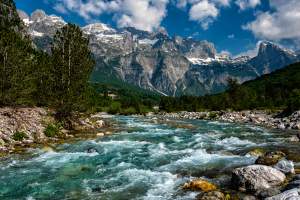
It’s more than a hike. More than a pilgrimage. The Camino de Santiago is a test, a rhythm, a long, slow conversation between your body, your mind, and the road beneath your feet. Some do it for religious reasons. Others do it to unplug, reset, recover, or just feel something real for a while. No matter the reason, everyone walks the Camino for the same ultimate prize — clarity, earned one step at a time.
Stretching across Spain (and parts of Portugal and France), the Camino isn’t a single path — it’s a network. But the most popular route, the Camino Francés, begins in Saint-Jean-Pied-de-Port on the French side of the Pyrenees and ends at the cathedral in Santiago de Compostela, where tradition says the remains of Saint James rest.
It’s 780 kilometers. Around 30–35 days of walking, depending on your pace. And no, it’s not easy. But it’s real — brutally, beautifully real.
Here’s a no-fluff, honest day-by-day breakdown of what walking the Camino Francés is really like.
Pre-Day: Saint-Jean-Pied-de-Port
Tiny French town. Cobblestone streets. Pilgrims in every direction, fiddling with packs and nervously double-knotting boots. You register at the pilgrim office, get your credencial (pilgrim passport), and try to sleep despite the nerves.
Reality check: Tomorrow is one of the hardest days of the entire Camino. Don’t overpack. You’ll regret every extra ounce on the climb.
Day 1: Saint-Jean to Roncesvalles (25km)
You cross the Pyrenees on foot. Yes, it’s as hard as it sounds. Uphill for hours, often in fog, wind, or rain. Horses graze lazily while you’re sweating bullets. You question your life choices before noon.
Then you crest the top. Silence. Rolling hills. Basque crosses. And finally, the descent into Roncesvalles — where you collapse and realize: You made it.
Day 2–4: Into Navarra
The body aches, but you’re in it now.
- Day 2: Roncesvalles to Zubiri (~21km) — woodlands and medieval bridges.
- Day 3: Zubiri to Pamplona (~20km) — a city break with pintxos and pilgrim menus.
- Day 4: Pamplona to Puente la Reina (~24km) — pass the Alto del Perdón, with windmills and iron pilgrim statues watching over you.
You’re adjusting. Blisters are blooming. The Camino teaches patience early.
Day 5–7: Through La Rioja Wine Country
The scenery opens up. Vineyards. Wheat fields. Warm sun. The road is dusty and long.
- Day 5: Puente la Reina to Estella (~22km)
- Day 6: Estella to Los Arcos (~21km)
- Day 7: Los Arcos to Logroño (~28km) — a bigger city with tapas bars and a chance to restock.
Unexpected joy: The free wine fountain at Irache. Yes, you read that right.
Day 8–12: Meseta Approaches
The terrain flattens. The crowds thin a bit. You start to get into a groove.
- Day 8: Logroño to Nájera (~29km)
- Day 9: Nájera to Santo Domingo de la Calzada (~21km)
- Day 10: Santo Domingo to Belorado (~22km)
- Day 11: Belorado to San Juan de Ortega (~24km)
- Day 12: San Juan to Burgos (~27km) — a stunning city with a gothic cathedral and real beds.
The body has calluses now. The mind is quieter. You’ve stopped checking your phone. The Camino is starting to strip you down.
Day 13–17: The Meseta (Burgos to León)
Flat. Hot. Minimal shade. Long days across the Castilian plateau.
- Day 13: Burgos to Hornillos (~21km)
- Day 14: Hornillos to Castrojeriz (~20km)
- Day 15: Castrojeriz to Frómista (~25km)
- Day 16: Frómista to Carrión (~19km)
- Day 17: Carrión to Terradillos (~26km)
The Meseta breaks some people. It’s repetitive, quiet, and mentally tough. But it also rewards you — sunsets that bleed across the horizon, wheat whispering in the wind, and a silence that feels sacred.
Day 18–22: Into León and Toward the Mountains
You enter León — another big, beautiful city — and prepare for the shift back into elevation.
- Day 18: Terradillos to Sahagún (~25km)
- Day 19: Sahagún to El Burgo Ranero (~18km)
- Day 20: El Burgo to Mansilla (~19km)
- Day 21: Mansilla to León (~18km) — rest day optional and highly recommended.
- Day 22: León to Hospital de Órbigo (~33km, or break it up)
You’re stronger now. Emotionally more raw. Physically more capable. And the pilgrims around you start feeling like family.
Day 23–26: Into the Mountains (Again)
You climb again — this time toward Cruz de Ferro, the highest point of the Camino.
- Day 23: Hospital de Órbigo to Astorga (~17km)
- Day 24: Astorga to Rabanal (~20km)
- Day 25: Rabanal to Molinaseca (~26km) — through Cruz de Ferro, where pilgrims leave stones carried from home
- Day 26: Molinaseca to Ponferrada (~8km) — a short day to recover and explore the Templar castle
The views are sharper. The climbs are real. But so are the emotions. Cruz de Ferro hits hard.
Day 27–30: Toward Galicia
You enter Galicia, with its lush hills, stone villages, and cooler air.
- Day 27: Ponferrada to Villafranca (~24km)
- Day 28: Villafranca to O Cebreiro (~28km) — a steep climb to a misty Celtic village
- Day 29: O Cebreiro to Triacastela (~21km)
- Day 30: Triacastela to Sarria (~18km)
You’re almost there. But here’s the twist: Sarria is the minimum starting point to receive the Compostela (the official certificate), so suddenly, the trail gets crowded again. Tour groups. Fresh-faced walkers. It’s jarring.
But you’ve walked 700km. You’ve earned your peace. Let it be yours.
Day 31–34: The Final Push
The end is close — but it doesn’t feel final yet. You’re both ready and not ready.
- Day 31: Sarria to Portomarín (~22km)
- Day 32: Portomarín to Palas de Rei (~25km)
- Day 33: Palas de Rei to Arzúa (~28km)
- Day 34: Arzúa to O Pedrouzo (~20km)
You’ve got your rhythm. Your pace. Your crew. You’ve stopped taking photos. It’s not about that anymore.
Day 35: O Pedrouzo to Santiago de Compostela (~20km)
The last day is emotional, strange, and full of conflicting feelings.
You enter Santiago through the suburbs. The cathedral towers appear. The cobbled streets echo under your boots. Pilgrims gather at the square in front of the Cathedral of Santiago. Some cry. Some cheer. Some just sit.
You’ve arrived. But the Camino doesn’t end here.
Because the truth is, it wasn’t about the cathedral. It was about everything that happened between the first step and the last.
What You Actually Learn (Besides How to Walk 780km)
- You don’t need much. Everything you thought was essential? Most of it wasn’t.
- Pain isn’t the end. You just keep walking.
- Everyone’s carrying something. And the Camino has a way of helping you lay it down.
- Silence heals. So does shared bread, shared stories, and shared blisters.
- Finishing feels strange. Because the Camino, in a way, walks with you after it’s done.
Walking the Camino de Santiago is not a vacation. It’s not even really a hike. It’s a long, slow shedding of distractions, defenses, and self-deceptions. You don’t return from the Camino with souvenirs. You return lighter — physically, emotionally, even spiritually.
Step by step, kilometer by kilometer, you trade comfort for clarity. And somewhere along the way, you realize:
You weren’t walking to find something.
You were walking to remember it.







